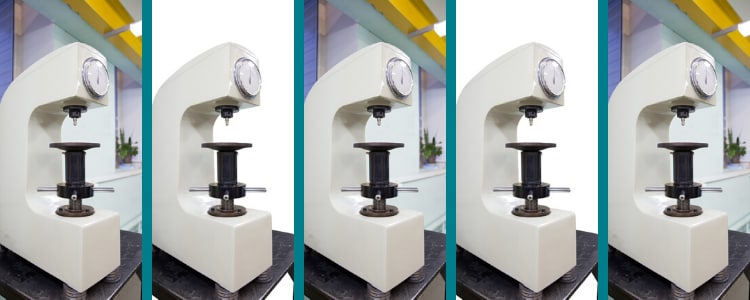
BSI has just published a tracked changes version of the international standard on verification and calibration of Brinell hardness testing machines. In this blog post, we look at the standard in more detail and particularly at what’s new.
Testing the hardness of metallic materials call for a high level of accuracy: hence the development of the Brinell hardness test and the development of machines with which to conduct it.
In turn, the machines have to be calibrated and verified as accurate themselves or they’re no use to anyone. To help enable this, ISO’s Mechanical testing of metals subcommittee on Hardness testing has produced a series of four related standards. These are on test method; machine verification and calibration; reference block calibration; and tables of harness values; respectively.
Specifically, we’ve just published the track changes version of the second part which is: BS EN ISO 6506-2:2018 TC Tracked changes – Metallic materials – Brinell hardness test – Part 2: Verification and calibration of testing machines.
Direct and indirect verification
BS EN ISO 6506-2:2018 specifies direct and indirect verification methods of testing machines used for determining Brinell hardness in accordance with Part 1 of BS EN ISO 6506, and also specifies when these two types of verification have to be performed.
Direct verification involves checking that individual machine performance parameters fall within specified limits. Indirect verification uses the hardness measurements of reference blocks, calibrated in accordance with BS EN ISO 6506-3 to check the machine’s overall performance.
If a testing machine is also to be used for other methods of hardness testing, it has to be verified independently for each method. This document applies to both fixed location and portable hardness testing machines. For machines that are incapable of satisfying the specified force-time profile, the direct verification of force and testing cycle can be modified by the use of Annex B.
The tracked changes revision
The revision of the 2014 standard was published in 2018. However, it’s only now that the tracked changes version is being made available. This is a new format for ISO. The idea is to make every single change very clear to users by highlighting additions in green and deletions in red. At the back of the same document, purchasers also get a full “clean” copy of the standard which is easier to use day-to-day and should be considered “the version of record.”
In the case of BS EN ISO 6506-2:2018 TC, the main 2018 revisions are the addition of a Clause 3 which introduces new links to IEC and ISO terminological databases, and an important amendment to Table 3 on “Repeatability and error of the testing machine for other force-diameter indices”. This has been changed by the addition of the force-diameter index value of 15.
This was done because the second sentence of Clause 5.2 states: “For each test force, at least two reference blocks shall be selected from the hardness ranges specified in Table 2 (for 0,102 × F/D2 = 30) and Table 3 (for other force-diameter indices).” Table 3 covered the force-diameter index values of 10, 5, and ≤ 2,5 – but not 15, even though it was specified in Table 2 of BS EN ISO 6506-1 as a possibility, for one specific parameter combination only (Hardness symbol HBW 10/1 500, Ball diameter 10 mm, Test force 14,71 kN). Table 3 is also referred to in Clauses 5.7 and 5.9, in relation to permissible repeatability and error criteria respectively.
In addition, the track changes version highlights a number of small but necessary editorial changes and clarifications.
The result is an updated standard, with an updated way to see how the changes have been made. ISO hopes that this new approach will prove helpful to users and ultimately make the verification and calibration of hardness testing machines clearer.
Find out more about BS EN ISO 6506-2:2018 TC



